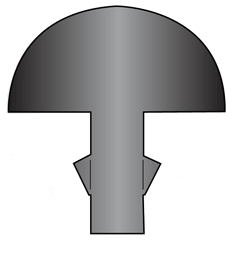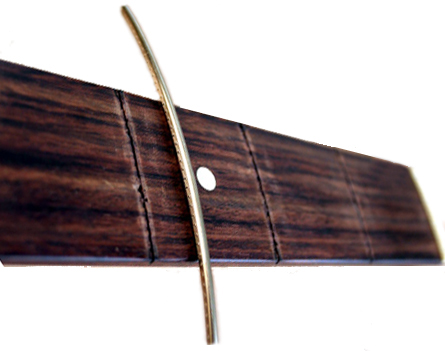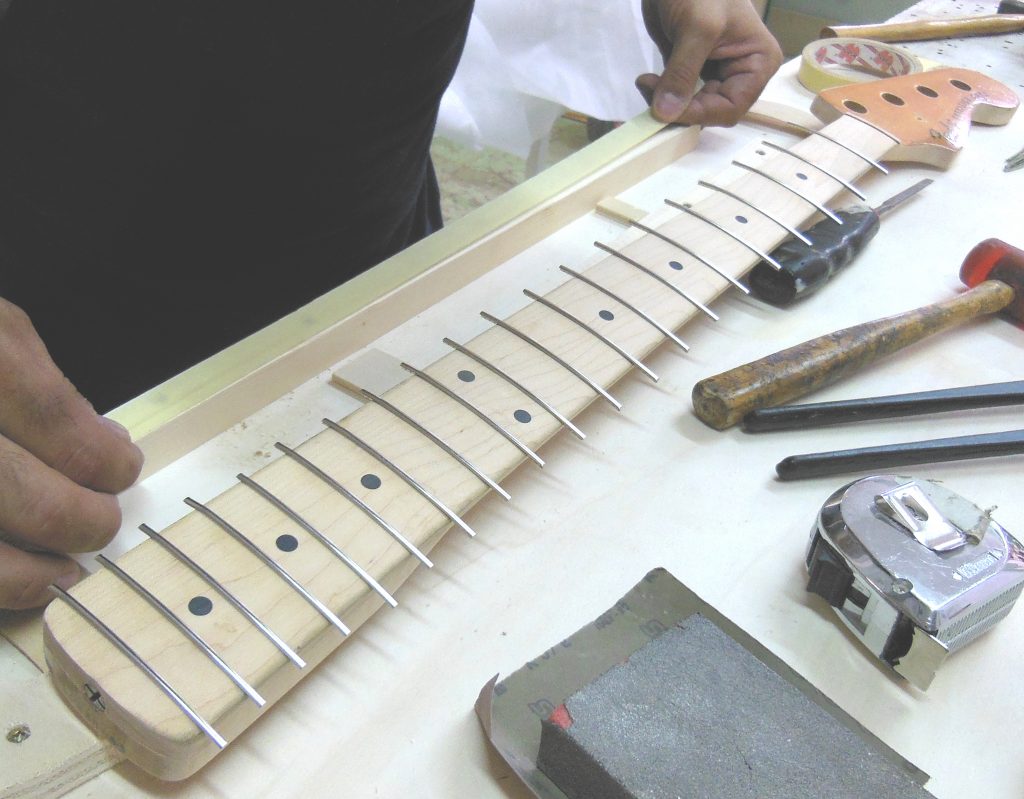Nut, frets and position markers
The nut is a small bar set between the headstock and the fingerboard. It can be made of plastic, ivory, bone, brass or graphite. When the strings are tightened each of them passes through a small groove in the nut.

NUT
The nut basically represents the zero fret. It enables us to play the strings without pushing them down on the fingerboard with fingers. Together with the bridge, the nut determines the distance between the strings and their distance from the fingerboard. It also influences the timbre, for instance the brassy one would give more sustain to the sound. Some models of nuts enable to adjust the distance between strings and fingerboard.

ADJUSTABLE BRASSY NUT ADJUSTABLE BRASSY NUT
Frets are small metal bars (steel or nickel). They are perpendicularly inserted in the fingerboard so that the string is so divided in suitable intervals of different lengths, which guarantee the right pitch of the notes we play.
Inserting the frets is a delicate operation that must be performed with the utmost care and precision.

SECTION OF THE FRET

THE FRET BEFORE BEING INSERTED AND CUT

INSERTED FRETS READY TO BE CUT
The frets can have various dimensions both in height and in width. These measures are called, from the smallest to the largest, with terms such as vintage, medium jumbo, jumbo, extra jumbo or similar. The choice is entrusted to the player’s experience and taste. In a general terms the low frets favor the glissando (sliding on the strings) the high ones the bending (pulling the strings), the wide ones improve the sustain.
The number of frets depends on the model of the electric bass. They normally range from 20 to 24. Their number on the fingerboard is denoted by the position markers. These can have different shapes and may be made of different materials. Yet the most common are small circles made of plastic, abalone or mother-of-pearl. The fret next to the nut is called first fret, the following one is called second fret and so on.
The position markers mark the odd frets. For instance, on a 24-fret bass they mark the 3rd, 5th, 7th, 9th, 15th, 17th, 19th, 21st frets (the 1st, 11th, 13th and 23rd are usually unmarked). The 12th and 24th frets have a double marking with two circles. The number 12 has an important role in music since it denotes the number of existing notes. We will see in what follows that the sequence of notes is repeated after the 12th note. The difference is that each note after the 12th has double frequency. This characterizes the chromatic scale.

FRETS NUMBERING
